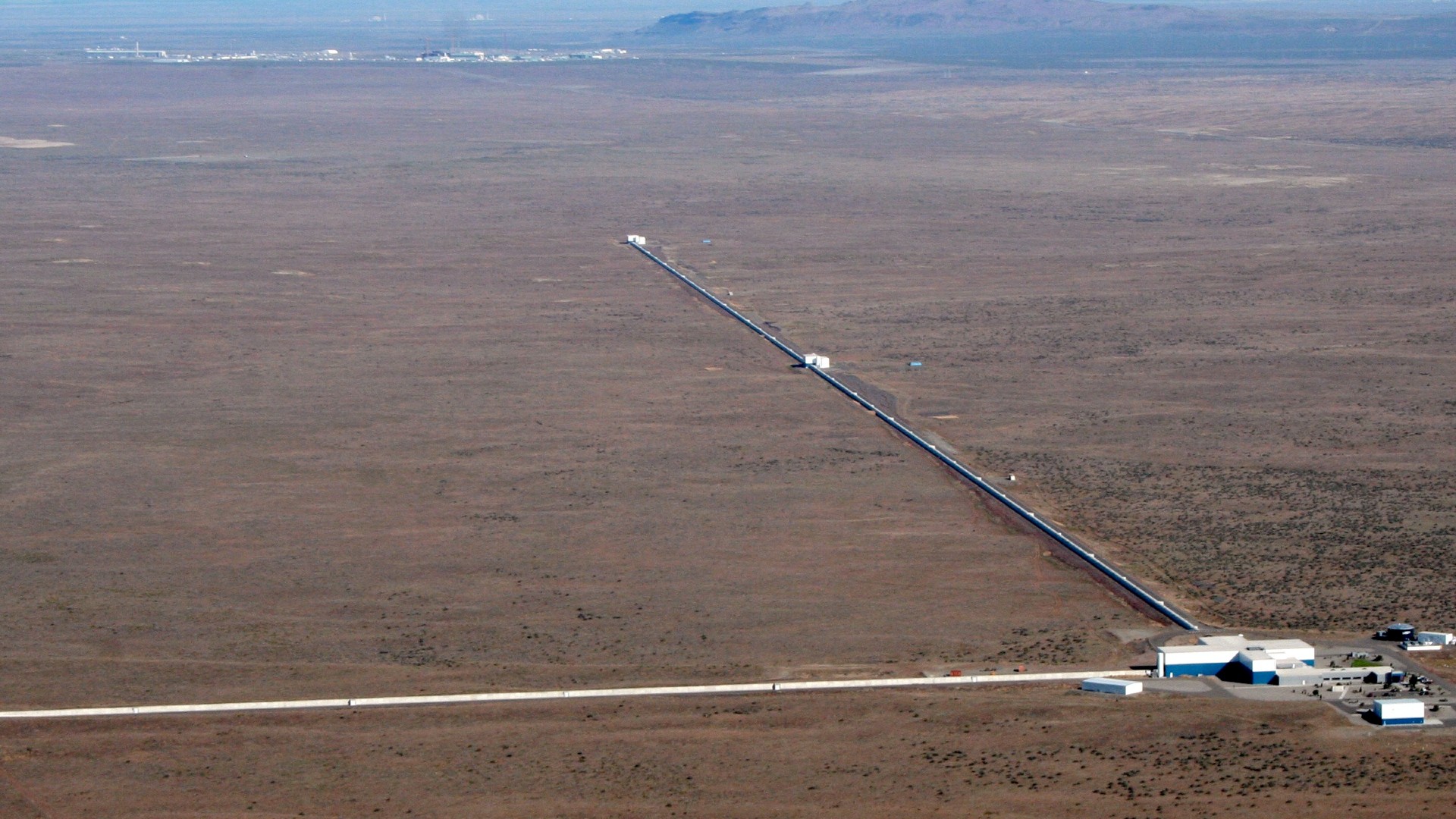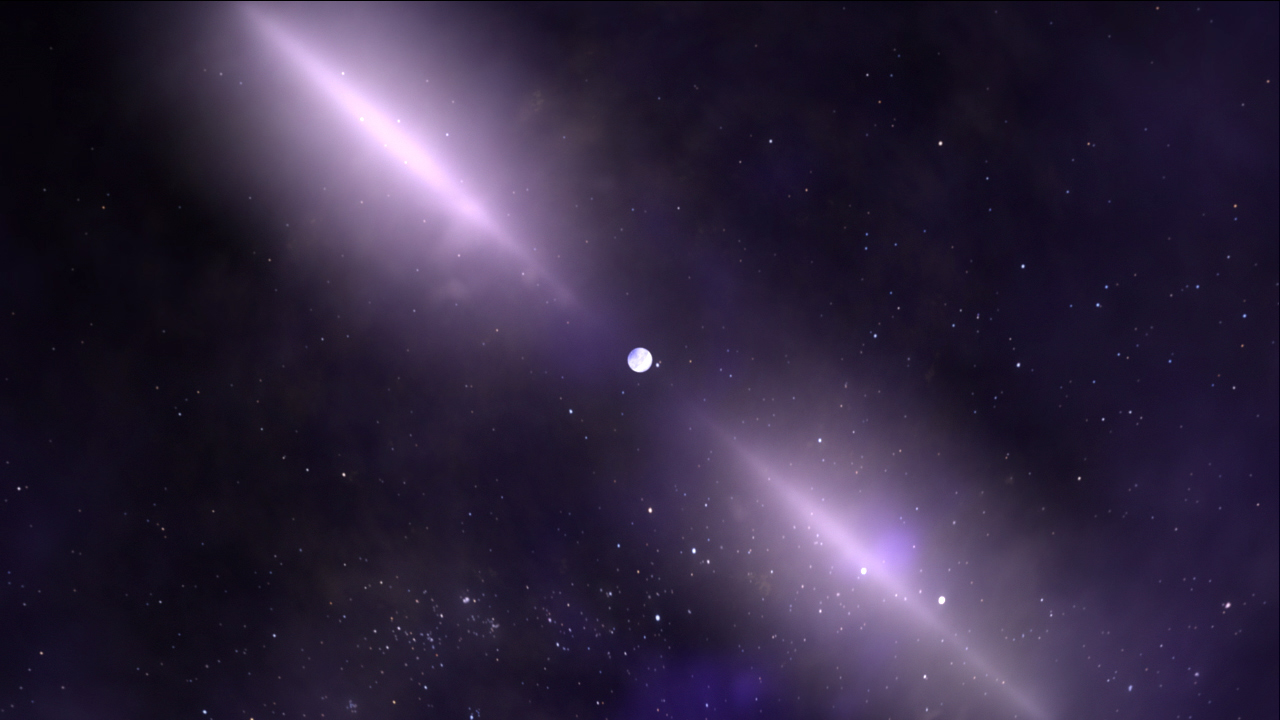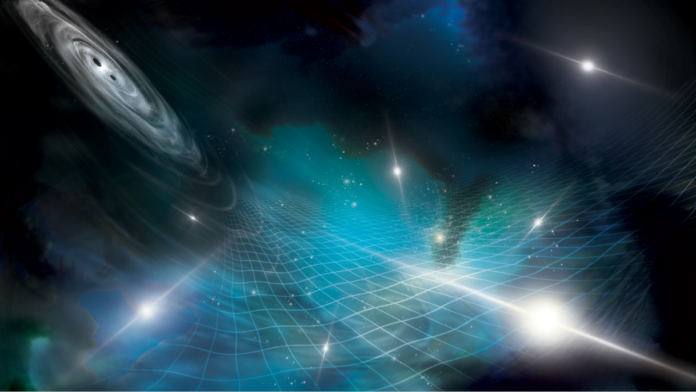The very fabric of the universe is ringing with gravitational waves from its earliest epoch, and researchers have finally “heard” this cosmic symphony.
On Thursday, June 28, the North American Nanohertz Observatory for Gravitational Waves (NANOGrav) revealed the detection of low-frequency gravitational waves, a historic breakthrough that represents 15 years of searching. Yet, this isn’t the first time that humanity has detected gravitational waves. Scientists have been detecting these ripples in the fabric of space using facilities like the Laser Interferometer Gravitational-Wave Observatory (LIGO) since 2015.
So, with that in mind, why isn’t this just another — inarguably impressive — detection of gravitational waves? The answer is all about three connected qualities: The frequency, the wavelength and the period of gravitational waves, and what these tell scientists about the objects and events that first sent them rippling through space.
Related: The mystery of how Mars meteorites reach Earth may finally be solved
What are gravitational waves?
Albert Einstein’s 1915 theory of gravity, general relativity, predicts that objects with mass have a warping effect on the very fabric of space and time — unified as “spacetime” — and gravity arises from this warping. General relativity also suggests that when objects accelerate, they should generate ripples in spacetime, a kind of gravity radiation we call gravitational waves. The effect becomes significant when the acceleration involves massive objects like supermassive black holes and neutron stars.
Gravitational waves, like electromagnetic radiation, come in a range of frequencies with high-frequency gravitational waves, like high-frequency light, having shorter wavelengths and being more energetic while low-frequency gravitational waves have longer wavelengths and are less energetic. Low-frequency longwave gravitational waves also have long periods, the time it takes between one peak of the wave passing a set point to the next peak passing that point.
Not all gravitational waves are created equal
The discovery announced on June 28 marks the first detection of low-frequency gravitational waves. The source of these low-frequency gravitational waves is believed to be supermassive black hole binaries in the very early universe. Think of this in terms of an orchestra. LIGO can hear the dramatic single “crash” of symbols from violent events like collisions and mergers. What the low-frequency gravitational wave signal NANOGrav heard is akin to the gentle background harmony of violins.
The strength of this signal indicates that a gravitational wave orchestra of hundreds of thousands or even millions of supermassive black hole binaries existed in the early universe.
“This finding opens up a new low-frequency window on the gravitational universe which will let us study how galaxies and their central black holes merge and grow with time,” National Radio Astronomy Observatory (NRAO) astronomer Scott Ransom, one of the around 190 scientists working with NANOGrav, told Space.com.
As black holes and neutron stars swirl around each other, they generate a continuous steady stream of low-frequency gravitational waves, effectively causing spacetime to ring like a gently struck bell. As they are emitted, the gravitational waves carry away angular momentum (spin), and this causes the black holes to draw together.
The closer orbiting objects are, the faster they emit gravitational waves and the higher the frequency of this gravity radiation becomes; additionally, the closer they are, the more rapidly they lose angular momentum and the quicker they spiral together until they collide and merge. This violent collision sends a blast of high-frequency gravitational waves barreling through space.
Additionally, there are also more exotic possible explanations for these faint ripples in space-time. A fraction of this signal could be a gravitational wave background predating even these early black hole pairs and originating from the Big Bang and the origin of the universe itself.
Why NANOGrav can do what LIGO and LISA can’t (and vice versa)
Just like it takes different telescopes to see different frequencies of light in the electromagnetic spectrum, it takes different gravitational wave detectors to “hear” different frequencies of this gravity-based spectrum of radiation.
Facilities like LIGO have been very successful in detecting higher-frequency gravitational waves caused by collisions between black holes, neutron stars, and even mixed mergers between the two, but lower-frequency gravitational waves have been evasive.
This is because the influence of gravitational waves is already tiny, with NANOGrav estimating the effect on spacetime as being as small as around one part in 1,000,000,000,000,000!
Even as sensitive as it is, LIGO and its fellow ground-based gravitational wave observatories can’t pick up low-frequency gravitational waves. Even the forthcoming space-based gravitational wave detector, the Laser Interferometer Space Antenna (LISA) will not be able to pick up should signals.
The gravitational waves that LIGO and other ground-based detectors can hear gravitational waves with wavelengths of around thousands of miles, about the size of Earth, with periods ranging from milliseconds to seconds. LISA will cover wavelengths the size of millions to billions of miles; think the distance from Earth to the sun or the distance of Earth or Pluto. The periods of these gravitational waves last from seconds to hours.
The gravitational waves that NANOGrav is designed to hear are at nanoHertz frequencies and have wavelengths on the scale of trillions of miles, making them light-years in length. And according to NANOGrav, these nanoHertz gravitational waves can have periods of months, years, or even decades.
Related: How does astronomy use the electromagnetic spectrum?
For this detection to take place, astronomers needed a gravitational wave antenna the size of the entire galaxy and an incredibly precise way of measuring time consisting of a network of “cosmic clocks.” That’s where NANOGrav comes in.

How were low-frequency waves picked up by NanoGrav?
Via three radio observatories, the now destroyed Arecibo Observatory in Puerto Rico, the Green Bank Telescope in West Virginia, and the Very Large Array in New Mexico, NanoGrav turned 68 pulsars within the Milky Way into a huge gravitational wave antenna the size of the entire galaxy. This unique and sensitive gravitational wave detector is called a pulsar timing array.
Like all neutron stars, pulsars form when massive stars exhaust their fuel for nuclear fusion, and the outward “push” of the energy produced in this process ceases. This results in the core of these stars collapsing under their own gravity and the outer layers being blasted away in a supernova explosion.
The width of the stellar core shrinks to such an extent that neutron stars have a mass from around that of the sun and up to twice our star’s mass crammed into a body no wider than that of the average city here on Earth. Due to the conservation of angular momentum, the reduction in diameter also causes the rotation of the stellar remnant to “spin up,” with some neutron stars spinning as fast as 700 times per second! Think of this as being like a figure skater drawing in their arms to increase their spin, just on a whole different scale!

The collapse of stellar cores has another consequence; the magnetic field of the original star is also squashed down. When magnetic field lines are crammed closer together, this increases the strength of the magnetic field they comprise.
As a result, neutron stars have some of the most powerful magnetic fields in the known universe. These magnetic fields act to channel particles to the poles of pulsars, where they are blasted out as jets at near-lightspeed from each pole. Pulsars appear to blink “on and off” — hence why astronomers initially believed they were pulsing stars — but this is the result of the light these jets create turning towards us at incredibly precise regular intervals. This means pulsars can be used as an excellent timing device.
The compression and stretching of spacetime as gravitational waves wash through it should have a discernible on the timing of pulsars, either slowing them down or speeding them up as they pass. This causes a very slight difference in the arrival time of light from these pulsars. Because the effect is small, pulsar timing arrays need to consist of many widely dispersed pulsars that have to be monitored for years.
For NANOGrav, patience has now paid off with this effect on pulsars now revealing a sign from low-frequency signal gravitational waves.
“Basically, the Earth is bobbing around — a tiny bit — on gravitational waves that are light-years in length,” Ransom said. “And we have seen this using an array of almost 70-millisecond pulsars scattered around our part of the Milky Way.”
The reason this discovery is important is we’ve now detected gravitational waves from sources we hadn’t investigated before. It has revealed that the early universe was packed with supermassive black hole binaries.
This matter because though scientists now know most, if not all, galaxies have at their heart a supermassive black hole, they aren’t yet sure how these cosmic titans grow. One suggested mechanism is a series of mergers between subsequently larger and larger black hole binary pairs.
This low-frequency gravitational wave signal hints at a way to understand how this could have proceeded in the early universe leading to some supermassive black holes that have masses millions or even billions of times that of the sun.
Additionally, because these black holes are likely delivered into the spiral dance of death that results in their merger by the collisions of galaxies, a better understanding of this black hole binary merger process means a better understanding of how galaxies grow and how the universe as a whole has evolved.
There is also the small chance that a tiny fragment of the gravitational wave signal this pulsar timing array the size of the Milky Way has picked up comes from gravitational waves created at the beginning of time during the Big Bang, which would have wavelengths ranging from around the size of the Milky Way — around 100,000 light-years — to the size of the Virgo Supercluster of galaxies — around 100 million light-years.
“This is exciting. The evidence reported by NANOGrav shows once again that gravitational wave observations are opening up a whole new window onto the universe,” KU Leuven, cosmologist and long-time Spethen Hawking collaborator Thomas Hertog, who was not involved in the study, told Space. “In the coming years and decades, we’ll be patching together the entire history of the universe in great detail by listening to the hum of gravitational waves passing through our planet. Exciting times indeed!”
With regards to the future, Ransom explained how NANOGrav will now look for a sensitive radio telescope in the northern hemisphere to substitute for the Arecibo telescope, which collapsed in Dec. 2020. Until that is found, the collaboration will compare data with other pulsar timing arrays to hone in on the source of low-frequency gravitational wave signals.
“With continued observations, we should start seeing individual sources as pure tones above this gravitational wave background. Those sources could be pinpointed and studied with electromagnetic waves as well — a new type of extragalactic multi-messenger astronomy,” Ransom concluded. “I’m very excited about this development! We’ve been working on this for over 15 years, and I’m not a very patient person!”

